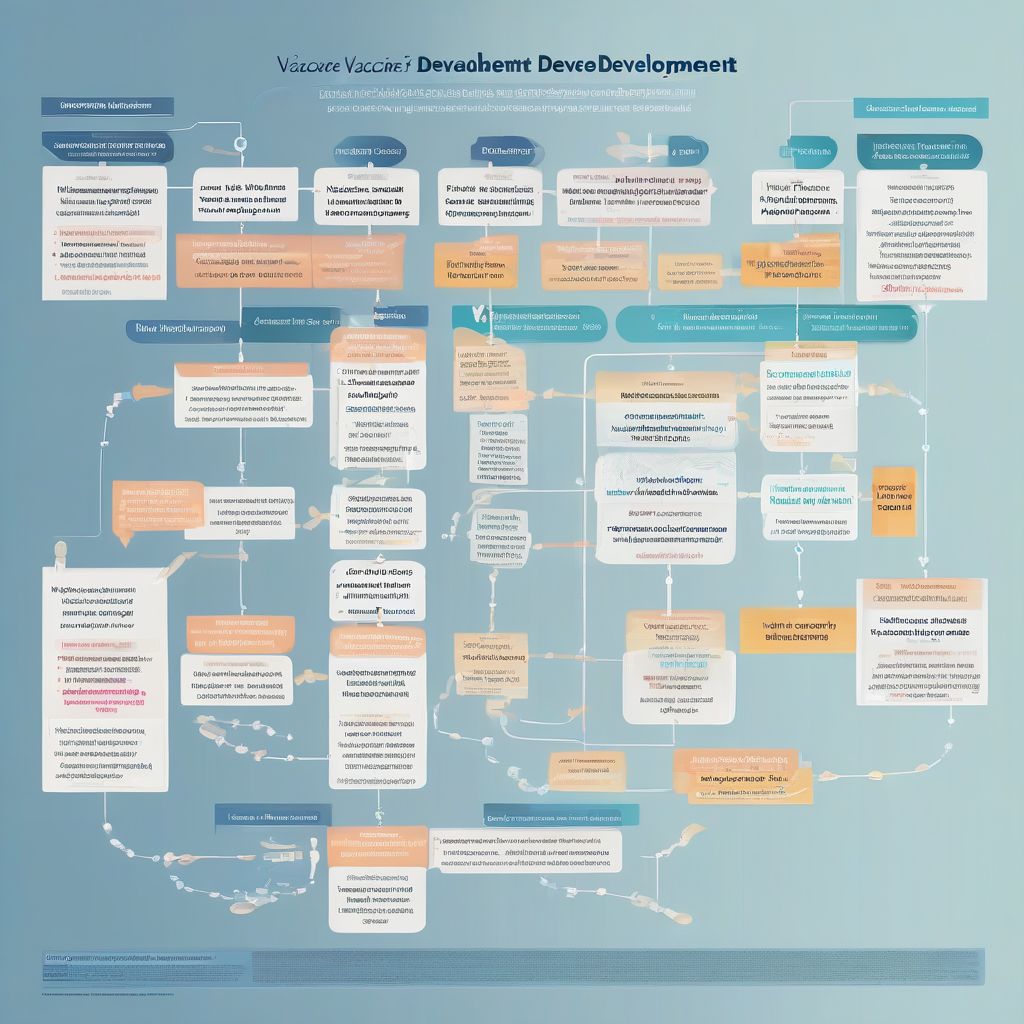Imagine a world without vaccines. Diseases like polio, measles, and smallpox, once common threats, would still cast a long shadow over our lives. Thankfully, vaccines have revolutionized public health, drastically reducing the incidence of these and many other infectious diseases. But have you ever stopped to wonder, “How are vaccines actually developed?” The process is a testament to scientific ingenuity and a cornerstone of global health initiatives. Let’s delve into the fascinating world of vaccine development and explore their profound impact on keeping us healthy.
The Journey of a Vaccine: From Lab to Life-Saving Solution
Developing a vaccine is a complex, multi-phased process that can take several years and involves rigorous testing and regulatory oversight. Here’s a breakdown of the key stages:
1. Exploratory Research: Identifying the Enemy
The first step involves identifying the pathogen (virus, bacteria, or parasite) responsible for the disease. Scientists study the pathogen’s structure, how it causes disease, and its interaction with the human immune system.
2. Pre-clinical Testing: Building the Defense
With a target in sight, scientists work to develop a vaccine candidate. This involves selecting the appropriate antigen – a weakened or inactive part of the pathogen that triggers an immune response without causing illness. The vaccine candidate undergoes rigorous testing in the lab and on animals to evaluate its safety and efficacy.
3. Clinical Trials: Putting It to the Test
If the vaccine candidate passes pre-clinical testing, it moves on to clinical trials involving human volunteers. This phase is crucial for assessing the vaccine’s safety, confirming its effectiveness, identifying any side effects, and determining the appropriate dosage. Clinical trials progress through three phases:
- Phase 1: A small group of volunteers receive the vaccine to assess its safety, confirm the correct dosage range, and identify any side effects.
- Phase 2: The vaccine is given to a larger group of people to further evaluate its safety and effectiveness, and to identify any common short-term side effects.
- Phase 3: A much larger group of volunteers, often thousands, receive the vaccine. This phase confirms the vaccine’s effectiveness, monitors for side effects, and compares it to existing treatments or a placebo.
4. Regulatory Review and Approval: Meeting the Highest Standards
After successful clinical trials, the vaccine developer submits an application to regulatory authorities, such as the Food and Drug Administration (FDA) in the United States. These agencies review the clinical trial data, manufacturing processes, and labeling information to ensure the vaccine’s safety, efficacy, and quality.
5. Manufacturing and Distribution: Making Protection Accessible
Once approved, the vaccine is manufactured under strict quality control standards to ensure consistency and safety. Distribution networks are established to deliver the vaccine to healthcare providers and vaccination programs around the world.
6. Ongoing Monitoring and Evaluation: Ensuring Long-Term Safety
Even after a vaccine is in use, ongoing surveillance programs monitor its long-term effects, track any rare side effects, and assess its effectiveness in real-world settings. This continuous evaluation ensures the vaccine’s safety and guides public health recommendations.
 Vaccine Development Process
Vaccine Development Process
The Profound Impact of Vaccines: A Legacy of Health
The development and widespread use of vaccines have been heralded as one of the greatest public health achievements in history. Vaccines have:
- Dramatically Reduced the Incidence of Infectious Diseases: Diseases like polio, measles, mumps, rubella, diphtheria, tetanus, and pertussis, which once caused widespread illness and death, are now preventable thanks to vaccines.
- Saved Millions of Lives: The World Health Organization (WHO) estimates that vaccines prevent 2-3 million deaths every year.
- Protected Future Generations: Vaccines not only protect individuals but also contribute to herd immunity, which occurs when a significant portion of the population is immune to a disease, making it difficult for the disease to spread. This protection is especially crucial for those who cannot be vaccinated due to medical reasons.
- Improved Economic Productivity: By preventing illness and disability, vaccines have significant economic benefits, reducing healthcare costs and lost workdays.
Addressing Vaccine Hesitancy: Building Trust in Science
Despite the overwhelming evidence supporting vaccine safety and efficacy, vaccine hesitancy remains a significant public health challenge. Misinformation and distrust in scientific institutions can fuel doubts and fears about vaccines. To address this, it’s crucial to:
- Engage in Open and Transparent Communication: Providing clear, accurate, and evidence-based information about vaccines, addressing concerns, and debunking myths is essential.
- Partner with Healthcare Professionals: Healthcare providers play a critical role in building trust and providing reliable information about vaccines.
- Promote Health Literacy: Empowering individuals with the knowledge and skills to critically evaluate health information and make informed decisions is crucial.
Conclusion: Vaccines – A Cornerstone of Public Health
Vaccines are a testament to scientific innovation and a cornerstone of public health, protecting individuals and communities from preventable diseases. Understanding the rigorous process of vaccine development, the layers of safety protocols, and their profound impact on global health is essential for making informed decisions about our health and contributing to a healthier future for all. As we face new health challenges, ongoing research and innovation in vaccine development will continue to be vital in safeguarding the well-being of generations to come.
Have questions or thoughts about vaccines? Share your comments below! Let’s continue the conversation about this critical public health topic.
[amazon bestseller=”vaccines”]
